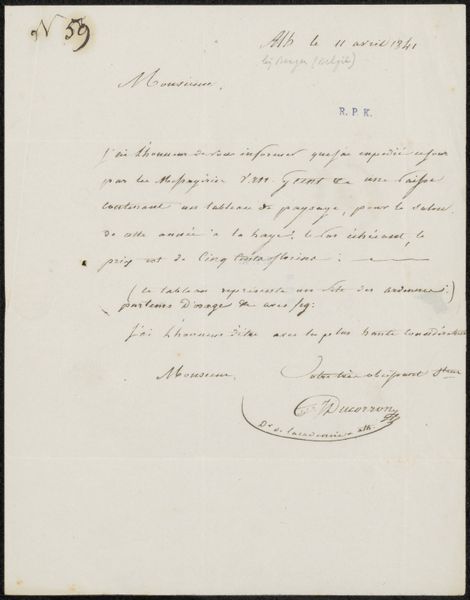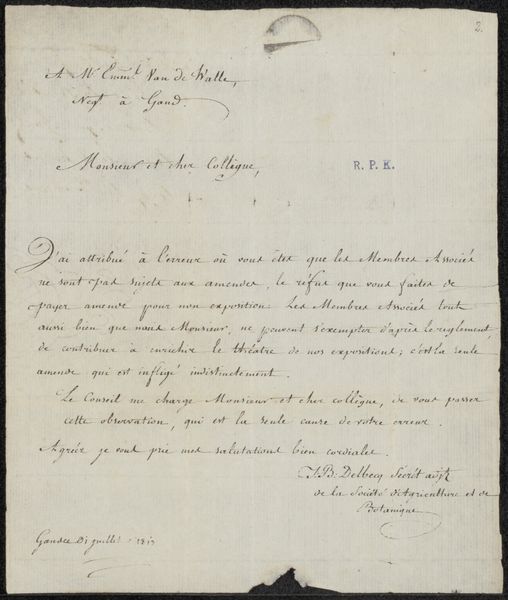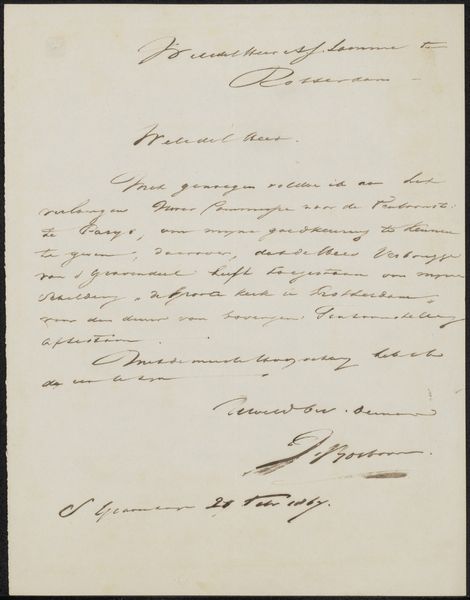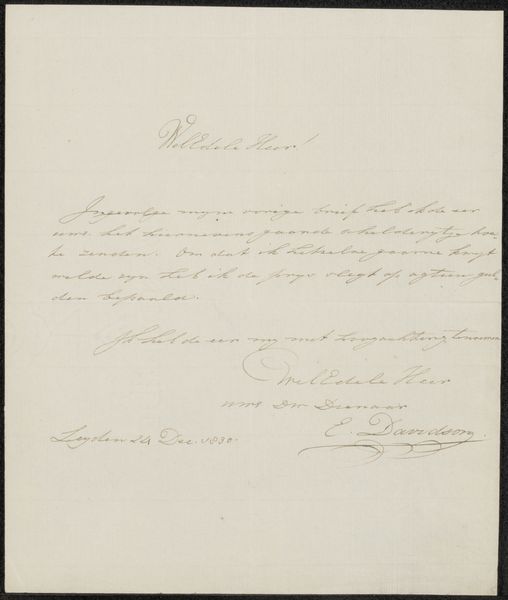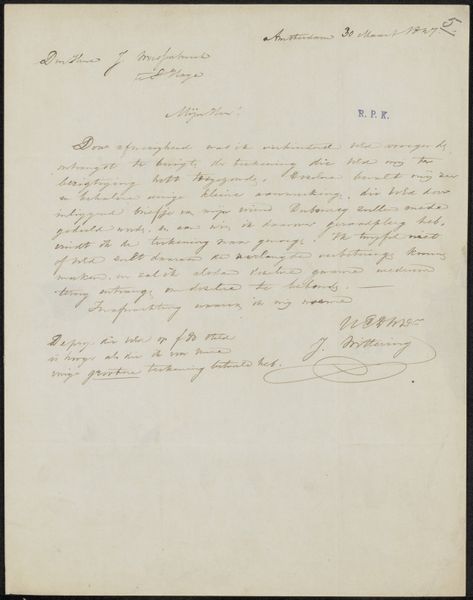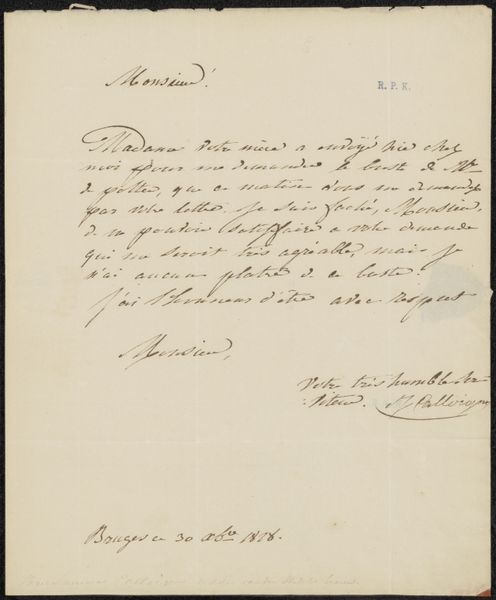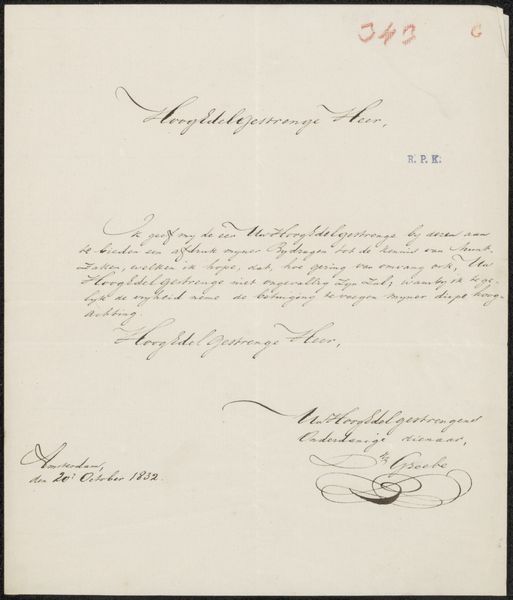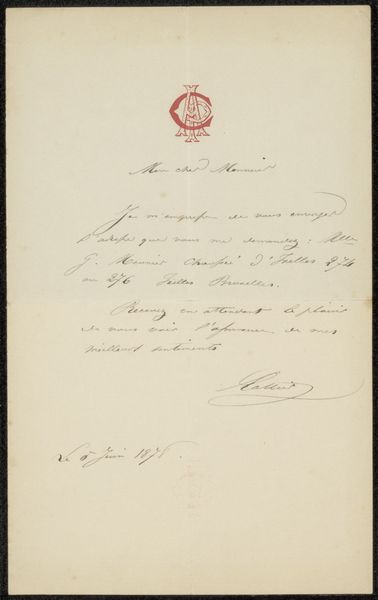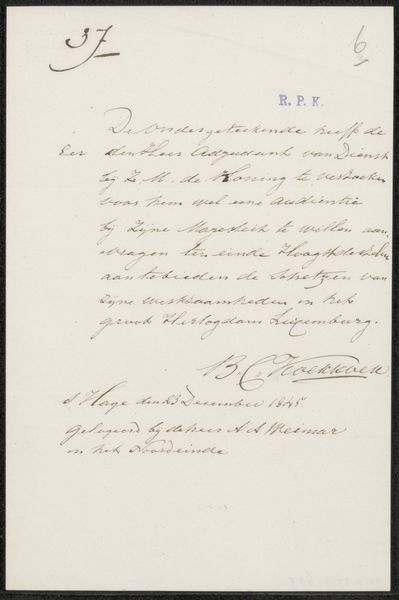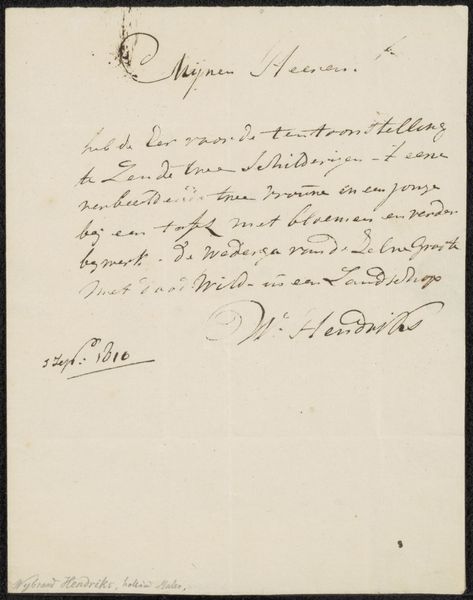
drawing, paper, ink, pen
#
portrait
#
drawing
#
ink paper printed
#
hand drawn type
#
paper
#
personal sketchbook
#
ink
#
hand-drawn typeface
#
ink drawing experimentation
#
romanticism
#
pen-ink sketch
#
ink colored
#
pen work
#
sketchbook drawing
#
pen
#
sketchbook art
#
calligraphy
Copyright: Rijks Museum: Open Domain
Curator: This delicate pen and ink drawing on paper is a letter, likely dating from around 1810-1814, titled "Brief aan Egide Norbert Cornelissen" and it seems to be a personal letter. What strikes you first? Editor: It’s the flowing script, really – it gives the page a sort of weightless, ethereal quality, like the words are almost dancing. And the letter has an antiquated feel from the typeface, too. Curator: The use of ink and paper in letter writing reveals quite a bit about the writer's process. There is material cost associated with sending letters during the time which signifies something for both the sender and receiver. Penmanship also became quite a celebrated form of production. Editor: Absolutely, and think of what the symbols and the words themselves convey here. This careful, elegant script seems fitting for the exchange of affection that it contains. “très affectionné serviteur” that means his love will be eternal, but that’s the way everyone signed letters then, wasn't it? Curator: It speaks to social status and cultural values regarding the importance of aesthetics and decorum. But to truly address it, let's consider who made it. Jean-Baptiste Delbecq. The drawing allows us insight to their materials they likely used, where they acquired them, and, ultimately, its circulation as well. The texture of the paper itself tells a tale. Editor: But it isn’t just about the supplies used in the letter! Think about what the letter hopes to accomplish. How does it express those sentiments with ink alone, the flourishing swirls implying connection between sender and recipient? I suppose those little pen marks themselves tell stories. Curator: Indeed. The medium affects the message, and the physical journey is just as crucial in interpreting the artistic labor that brought this piece into existence. It’s not enough to see it as mere Romanticism or portrait. Editor: So, by understanding not just what’s represented, but how the object itself came to be, the history can influence our connection to Delbecq's intent with the drawing? Curator: Precisely! Every deliberate marking unveils a moment, inviting us to truly consider our own reception and its production of meaning in return. Editor: What a perfect reminder to value the full picture when examining any piece. Thank you!
Comments
No comments
Be the first to comment and join the conversation on the ultimate creative platform.
